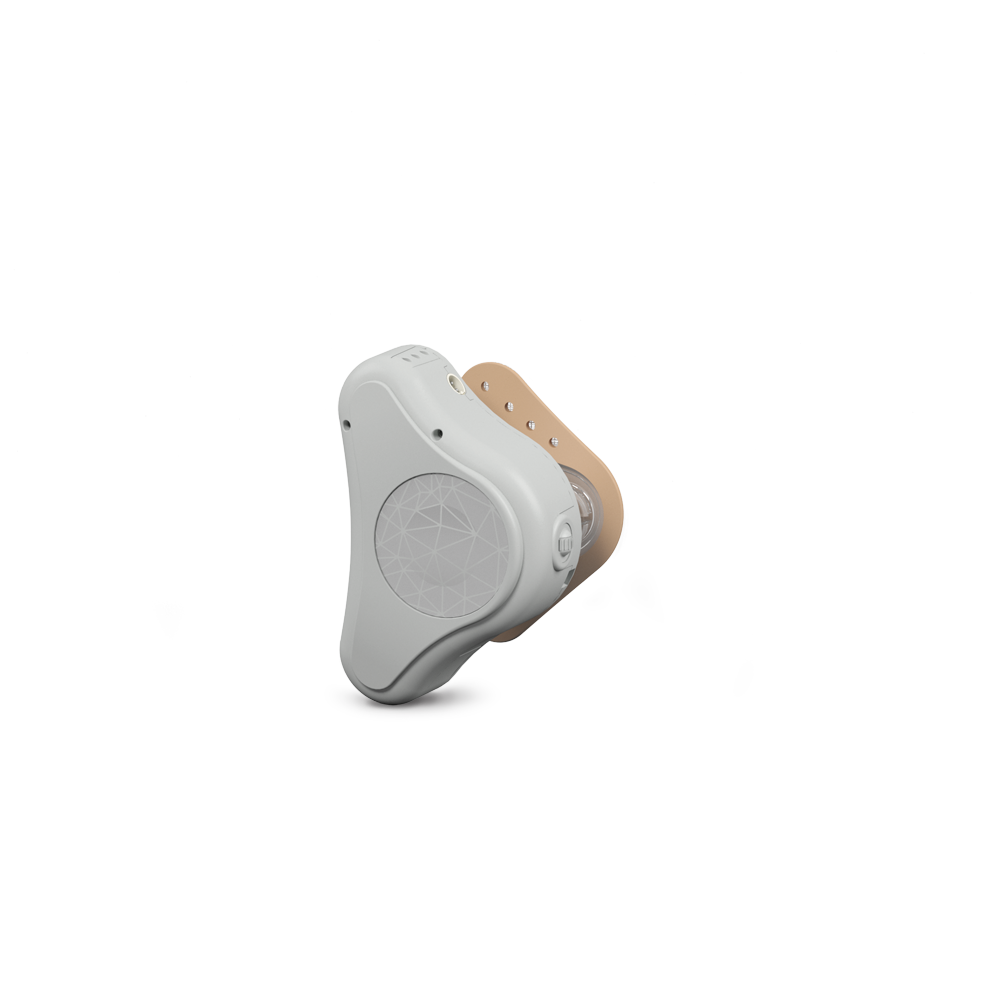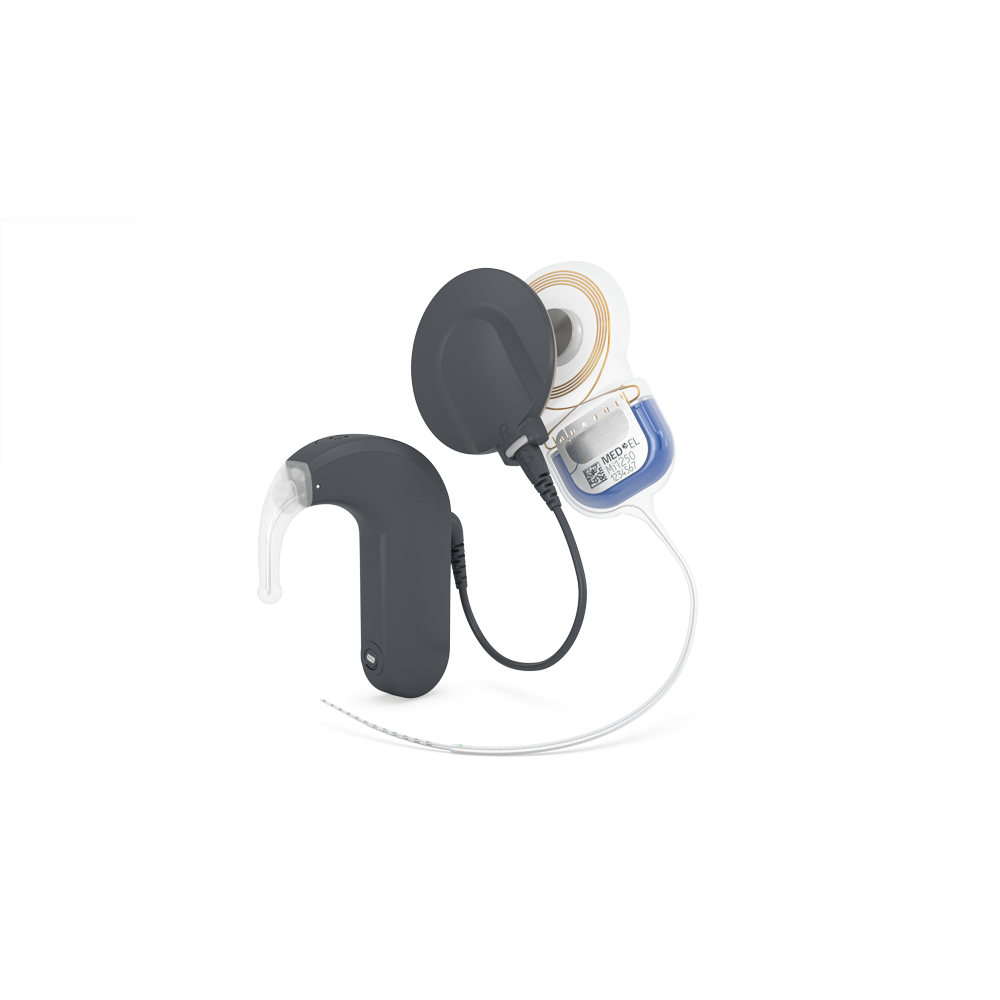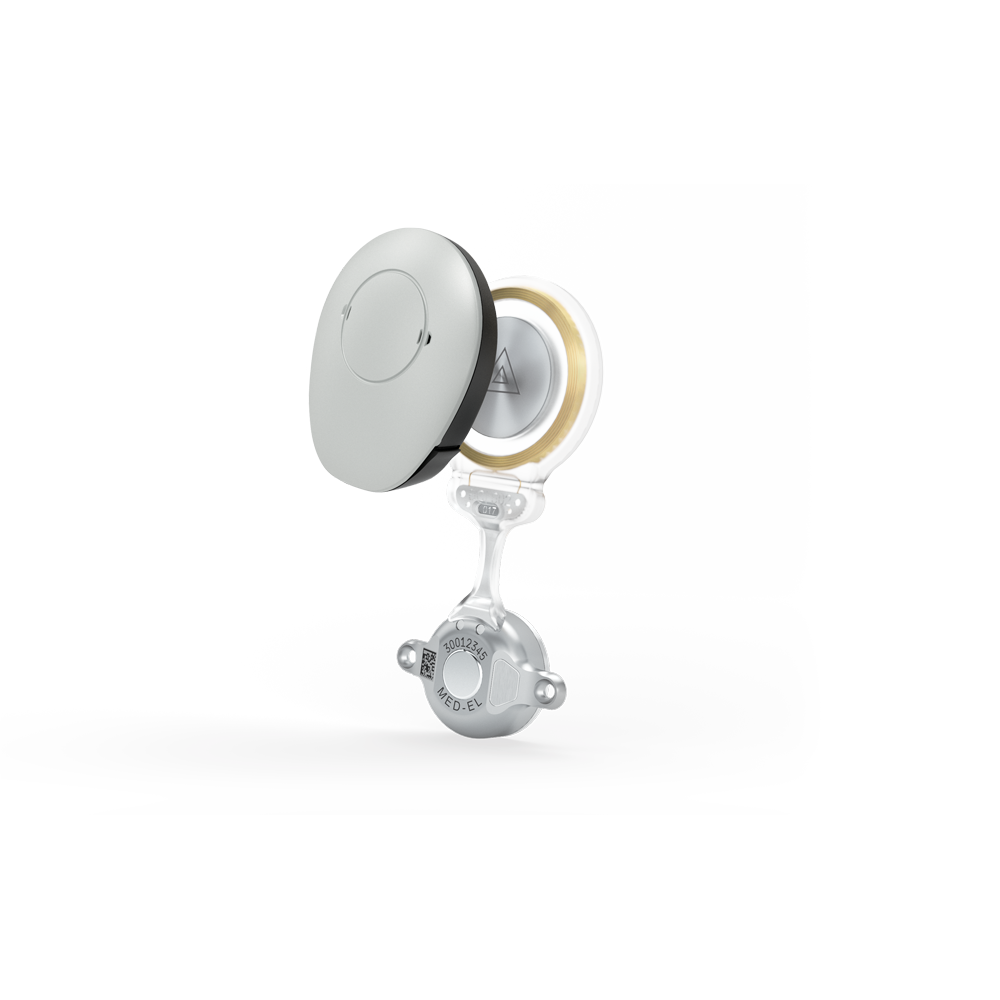
MED-EL
Published Jul 29, 2025
Hearing Loss in One Ear: Causes, Symptoms, and Treatment Options
Hearing loss in one ear affects around five percent of adults in the United States. But what exactly is it, how is it caused, and how can it be treated? Let’s take a look at the most common causes behind unilateral hearing loss, how it’s diagnosed, and suitable treatment options. We’ll also look at practical tips for preventing hearing loss in one ear.

What Is Hearing Loss in One Ear?
Most people get hearing loss in both their ears (binaural hearing loss). But it’s also possible to lose your hearing in just one ear. This is known as unilateral hearing loss.
Unilateral hearing loss can develop at birth or later in life and can range in severity from mild to profound. It usually develops over time but can also occur suddenly.
Even if the hearing in your other ear is normal, unilateral hearing loss can affect your ability to understand speech and tell where sounds are coming from.
Unilateral Hearing Loss vs. Single-Sided Deafness
Although these terms are sometimes used interchangeably, unilateral hearing loss and single-sided deafness are not the same. Single-sided deafness is a severe form of unilateral hearing loss where one ear is completely ineffective. This can have a significant impact on quality of life.
If you have single-sided deafness, you probably won’t benefit from a hearing aid. However, a cochlear implant might be a good option for you.
Understanding the Causes of Hearing Loss in One Ear
Hearing loss in one ear has a number of different causes. The most common reasons for unilateral hearing loss include:
- Viral or bacterial infections. This is especially common in children.
- Tumors such as acoustic neuromas
- Injuries to the ear or head
- Exposure to loud noises
- Disorders such as labyrinthitis and Meniere’s disease
- Earwax or blockages in the ear
- Congenital conditions such as microtia
Symptoms of Hearing Loss in One Ear
If you can’t hear out of one ear, you might find yourself:
- Asking people to repeat themselves
- Turning up the volume on your phone or TV
- Struggling to understand conversations, especially in loud environments like restaurants
- Favoring one ear on the phone or in conversations
Other signs of unilateral hearing loss include tinnitus (ringing) in one ear, listening fatigue, and problems telling where sounds are coming from.

How Is Hearing Loss in One Ear Diagnosed?
If you think you might be losing hearing in one ear, it’s important to visit your doctor. They will take a look at your symptoms and medical history. They will examine your ears, nose, and throat to check for ear wax, blockages, ear infections, or any other issues that could affect your hearing. In some cases, they might carry out a CT scan or MRI to check for tumors or damage to your ear.
Your doctor may also refer you to an audiologist for a hearing test. This will measure how you respond to sounds at different volume levels to determine the cause and level of your hearing loss.
Take Our Free Online Hearing Test
Check your hearing from home with our free online hearing test.
Free Online Hearing TestWhat Treatment Options Are There for Hearing Loss in One Ear?
There are several different treatment options for hearing loss in one ear. The best treatment option for you will depend on the severity and underlying cause of your hearing loss, as well as your personal circumstances. Your doctor or hearing professional is best suited to advise you on the most suitable option for your situation.
In some cases, your doctor will be able to treat the underlying cause of hearing loss, for example, by removing earwax buildup. However, if the hearing loss is irreversible, your doctor may recommend another solution.

Non-Surgical Solutions for Unilateral Hearing Loss
Hearing Aids
Hearing aids are an effective and readily available treatment option for mild to severe cases of unilateral hearing loss. They work by amplifying sound—making sound louder in the affected ear.
CROS Systems
If a traditional hearing aid isn’t appropriate, your doctor might recommend a CROS system. With a CROS (contralateral routing of sound) system, you have a microphone in your affected ear, and a device in your “good” ear. The microphone picks up sound waves entering your affected ear and sends them over to your other ear.
Bone Conduction Devices
If unilateral hearing loss is caused by conductive hearing loss, a non-surgical bone conduction hearing aid could be a suitable treatment option. These work by conducting sound through your bones to your inner ear—bypassing damage or blockages in your middle ear.
Bone conduction devices can also work like a CROS system, sending sound across to your “good” ear.

Discover ADHEAR
Bone Conduction System >Surgical Solutions for Unilateral Hearing Loss
Cochlear Implants
If you have severe-to-profound hearing loss in one ear (single-sided deafness), a cochlear implant could be the right solution for you. A cochlear implant works by turning sound into electrical signals that stimulate the inner ear (cochlea). From here, the signals travel to the brain and are heard as sound.

Discover SYNCHRONY
Cochlear Implants >Bone Conduction Implants
If you have conductive hearing loss, it can be treated with a bone conduction implant. This kind of implant works by transmitting sound through your skull. This sound bypasses any damage in your middle ear.
Alternatively, if your single-sided deafness is sensorineural, a bone conduction implant can pick up sounds on the side with hearing loss and send them to the inner ear on the other side.

Discover BONEBRIDGE
Bone Conduction Implant >Can I Prevent Unilateral Hearing Loss?
It’s not possible to completely prevent hearing loss in one ear. However, there are some steps you can take to reduce your risk of developing unilateral hearing loss, including:
- Wear earplugs or other hearing protection in loud environments such as concerts or when working with loud machinery.
- Keep the volume of your TV or phone down, especially if you’re using headphones.
- Manage health conditions linked to hearing loss, such as diabetes.
- Avoid sticking cotton swabs in your ear. These can cause your eardrum to rupture.
- Quit smoking.

Frequently Asked Questions About Hearing Loss in One Ear
Why Can’t I Hear Out of My Ear
If you can’t hear out of your ear, it may be due to earwax buildup, an ear infection, a ruptured eardrum, or sudden hearing loss. Some causes are temporary, while others need urgent attention. It’s best to see a doctor promptly to identify the issue and prevent complications.
What Causes Unilateral Hearing Loss?
There are several different causes of unilateral hearing loss. Some of these are temporary, such as ear blockages or infections. Other causes include congenital conditions, disorders like Meniere’s disease, injuries to the ear, exposure to loud noises, and tumors.
Will Hearing Loss in One Ear Affect My Other Ear?
Unilateral hearing loss only affects one ear. However, it can impact your overall hearing experience, especially if the hearing loss is severe. Hearing loss in one ear affects your ability to tell where sounds are coming from or how loud noises are and can make it hard to hear in noisy environments. It can also lead to listening fatigue.
How Does Being Deaf in One Ear Affect My Daily Life?
Single-sided deafness can have a significant impact on quality of life. It can make it difficult to tell where sounds are coming from, which can make hearing traffic to cross roads more challenging. People with single-sided deafness also tend to find listening to conversations in noisy restaurants or cafes difficult and might start avoiding certain places. The extra cognitive load on the brain might also lead to listening fatigue, making it harder to concentrate on tasks.

There’s something so special about having access to sound on both sides after living life in mono for eight years. I’m gradually getting some sense of where sounds are coming from.
Carly
Cochlear implant recipient with unilateral hearing loss
Next Steps: Hearing Loss in One Ear
Discovering you have hearing loss in one ear can seem overwhelming. However, it’s important to see a doctor and get a diagnosis as soon as possible. In some cases, your doctor might be able to treat the underlying cause. If not, there are plenty of solutions, from hearing aids to cochlear implants, that can treat the symptoms of unilateral hearing loss and help restore your quality of life.
If you have hearing loss in one ear, your local MED-EL team is happy to advise you and guide you through possible hearing solutions.
Solutions for Single-Sided Deafness
MED-EL offers hearing solutions for single-sided deafness. Your local MED-EL team can talk you through the options.
Get in TouchReferences

MED-EL
Was this article helpful?
Thanks for your feedback.
Sign up for newsletter below for more.
Thanks for your feedback.
Please leave your message below.
Thanks for your message. We will reply as soon as possible.
Send us a message
Field is required
John Doe
Field is required
name@mail.com
Field is required
What do you think?
© MED-EL Medical Electronics. All rights reserved. The content on this website is for general informational purposes only and should not be taken as medical advice. Contact your doctor or hearing specialist to learn what type of hearing solution suits your specific needs. Not all products, features, or indications are approved in all countries.

MED-EL

MED-EL


